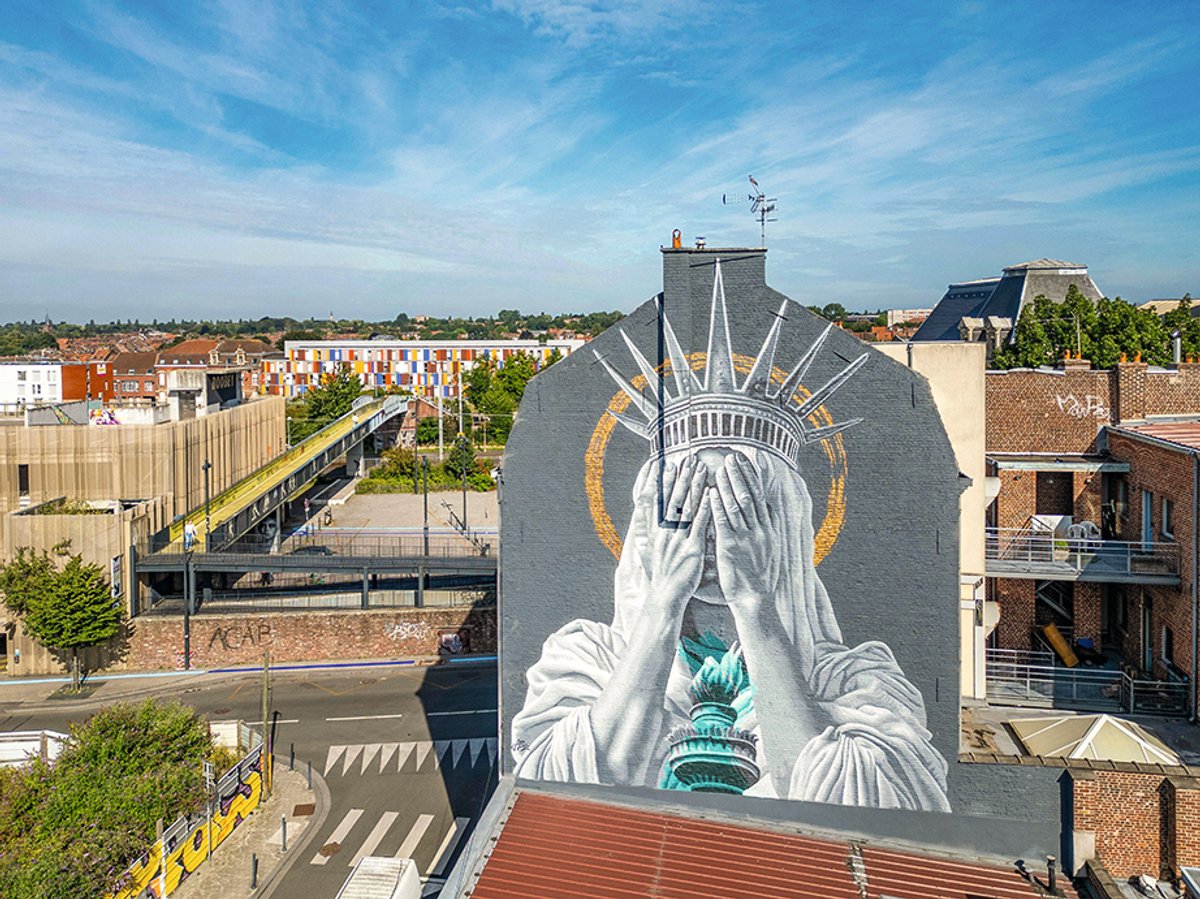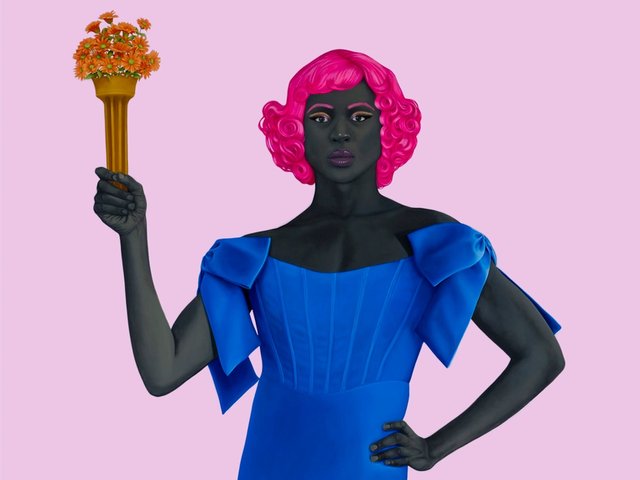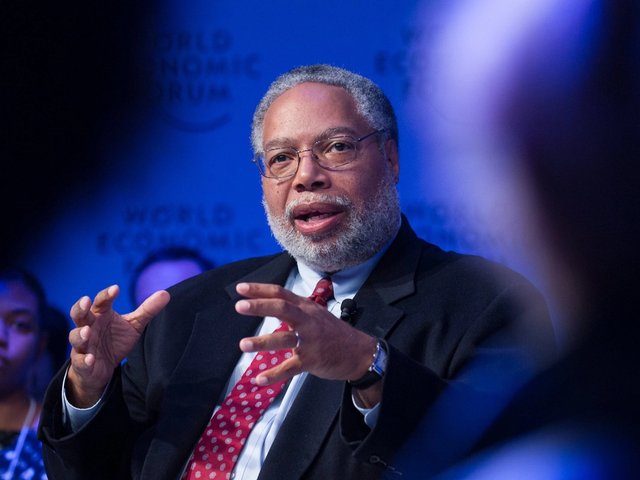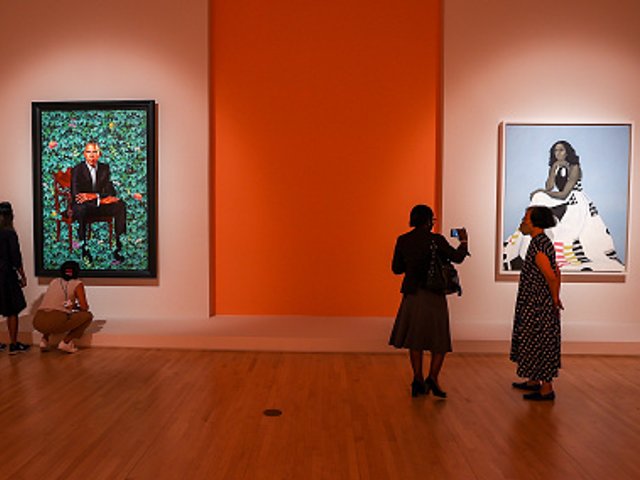President Donald J. Trump likes a list. There was a 20-point list of demands aimed at achieving the ceasefire in Gaza, which is due to be implemented later today. There is that long list of countries that have to pay tariffs to trade with the US. There is now even a list of the art he hates.
In August the White House issued a statement proclaiming “President Trump is right about the Smithsonian”, itemising cultural initiatives from the federally funded institution that have incurred his displeasure.
Among these was a painting by the admired Black US artist Amy Sherald depicting a transgender person posing as the Statue of Liberty. Trans Forming Liberty (2024) was to be included in a solo exhibition of Sherald’s work scheduled for the Smithsonian-run National Portrait Gallery in Washington, DC, in September. However, having been informed in July that the museum was considering pulling this particular painting, Sherald pulled the whole show.
Explaining her decision in a letter to Lonnie G. Bunch III, the secretary of the Smithsonian, the artist said that she had believed the institution “shared a commitment to presenting work that reflects the full, complex truth of American life”, but that she now felt “conditions no longer support the integrity of the work as conceived”.
The White House had already urged the Smithsonian to conduct a review of its materials, suggesting its museums make “content corrections” that ensure alignment with Trump’s vision of “American exceptionalism”. On 3 September, the institution announced it would establish a team to review its holdings and presentations.
We artists aren’t makers of luxury goods. Artists need to take risks
These episodes highlighted the vulnerability of the US’s state-funded cultural sector under an autocratic populist president determined to suppress artistic expression perceived as intolerably “woke”. Sherald is an establishment artist, the epitome of the US’s elite liberal taste. Her 2018 official portrait of the Democrat first lady Michelle Obama was a fixture of the show no longer going to the NPG.
Trans Forming Liberty was recently featured on the front cover of The New Yorker magazine. Her paintings have sold for as much as $4.2m at auction. Yet faced with the possibility of having one work in her Smithsonian survey censored, Sherald self-censored her entire show. (It will now travel to the Baltimore Museum of Art instead.) Given how political “conditions” are changing in the US and elsewhere, where can art that tries to tell a “full, complex truth” go from here?
Street art speaks up
One clear answer came from the other side of the Atlantic on 4 July when a monumental 42m-high mural of the Statue of Liberty covering its eyes in shame was unveiled at Roubaix, a run-down former industrial city in northern France.
“I created this piece after witnessing the growing injustice toward migrants worldwide,” says the young Dutch street artist, Judith de Leeuw, who posted dramatic drone shots of her painting on Instagram. By mid-August, her online post had racked up more than 34 million views. “Not sure why American artists aren’t doing these murals! Thank you for speaking out,” was one of the positive responses in a predictably mixed bag of comments.
“Roubaix felt like the right place,” says De Leeuw, who collaborated with the URBX Festival, Collectif Renart and Roubaix itself to make the project happen. “It has the largest migrant population in France and is also the poorest city. The connection to the Statue of Liberty, originally a gift from France, made it even more meaningful.”
De Leeuw has not been the subject of any major museum shows and she has no track record in the art market. Her style could be viewed as a bit illustrative. But this piece of street art had an audacity of conception and emotional power that has so often been lacking from the more “serious” works recently shown in museums, galleries and fairs in the established art world.
Rarefied liberal tropes
The problem is that as more and more governments lurch rightwards, seemingly towards a new authoritarian world order (a process chillingly charted by Anne Applebaum in her recently updated 2024 book Autocracy, Inc.), the more the rarefied liberal tropes of international contemporary art, with its long-prevailing fixation with identity politics, fall out of step with the concerns of wider society. They resonate even less with the 1% that generally most benefit from right-wing governments’ economic policies.
Ralph DeLuca, a New York-based art adviser and vice chair and global head of pop culture at Sotheby’s, writing in the online magazine Cultured in August, says the changing geopolitical conditions are already making ultra-wealthy collectors rethink their spending habits. “Over the past decade, the market leaned heavily into identity politics,” DeLuca writes. “Today, I’m sensing a pullback. Collectors may no longer resonate with a particular artist’s message (if they ever even did?) and no longer want to live with—or even own—the work.”
In today’s “less overtly ‘woke’ political environment”, collectors are seeking works that are classics, or are simply beautiful or technically skilful, rather than those that “make a statement”, according to DeLuca.
If that is the case, the art market will continue its own process of self-censorship. Art Basel is the industry’s dominant fair brand, and it is worth noting that three out of its five annual events—Hong Kong, Qatar and Miami Beach—are held in territories that are to a greater or lesser extent authoritarian. Art Basel Paris is held in the epicentre of the global luxury industry. Works that look good and that do not say anything in particular are set to predominate. Gagosian’s recent show of new Rudolf Stingel Vineyard Paintings in London, for example, was perfectly in tune with the current market zeitgeist. “I’m leaving rigorous conceptual process behind and allowing myself to paint,” says the artist, who has a studio in the billionaires’ playground of Martha’s Vineyard.
Anish Kapoor the activist
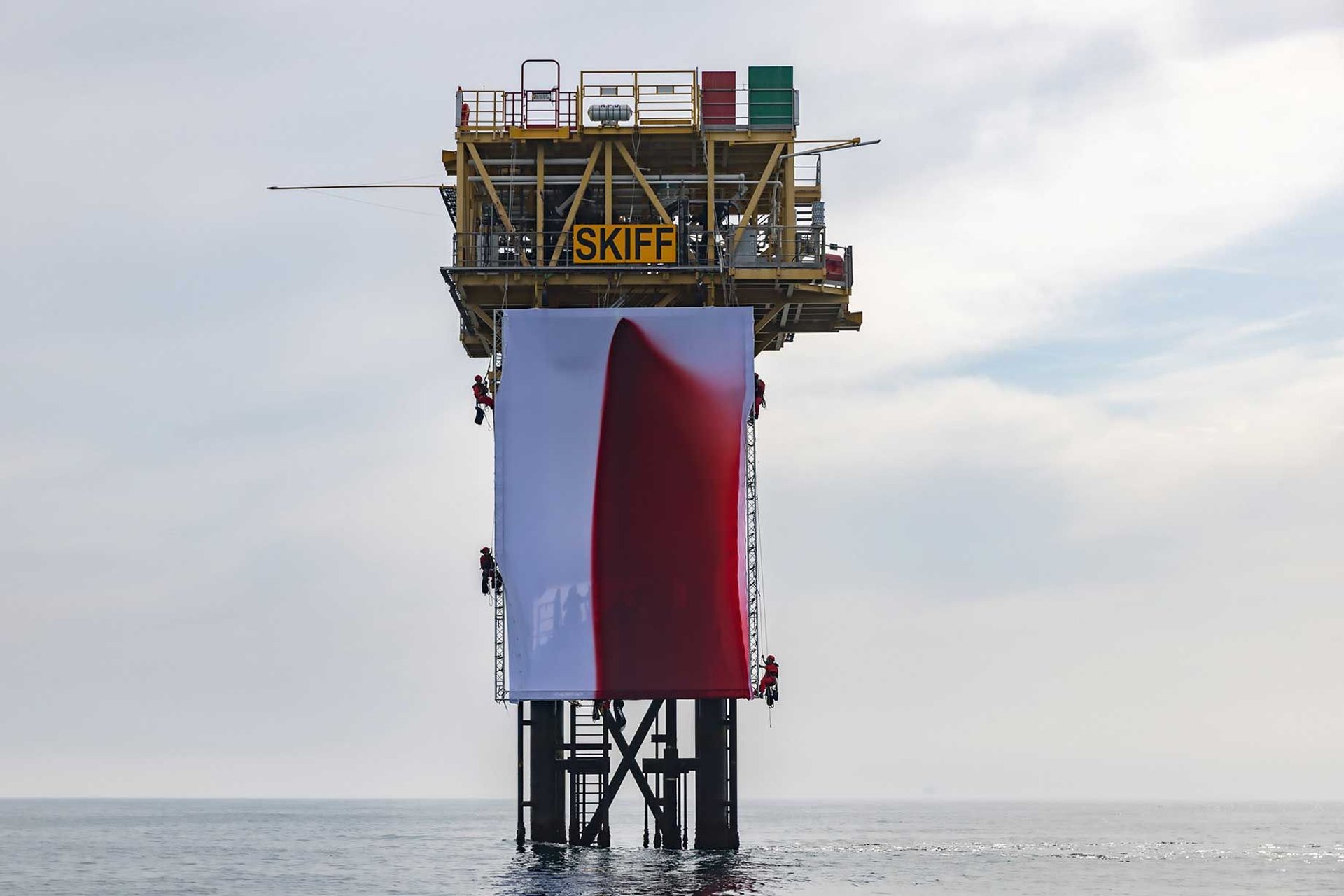
Making a point: Greenpeace climbers installed Anish Kapoor’s 96 sq. m artwork Butchered onto a Shell oil rig in the North Sea in August
© Andrew McConnell/Greenpeace
Meanwhile, art that does try to say something continues to turn up in the most unlikely places. In August, Greenpeace activists unveiled an enormous blood-red abstract painting by Anish Kapoor on a working Shell oil rig in the North Sea. Measuring 96 sq. m and titled Butchered, the work was a heart-felt howl against the ongoing butchering of our natural environment.
“Not so long ago, art was radical,”Kapoor says. “All those positions have been occupied. We have to reinvent the practice of showing art in poetic places—like the middle of the ocean.”
“We artists aren’t makers of luxury goods,” adds Kapoor, who, it has to be said, continues to sell his sculptures for big-ticket prices at art fairs. “Artists need to take risks and not get stuck in the commercial market. It’s important to have a deep political commentary while at the same time hold on to the intrinsic reality of the work of art.”
Effectively combining art and activism while avoiding didacticism has always been a tricky balancing act. But both the US and British liberal political establishment and liberal art establishment are running out of ideas and losing support. The further left-field seems to be where interesting stuff is happening. But this stuff is not for sale.
“The idea that commodified art objects might also be meaningful forms of political protest had been in ascendancy since around 2016 and is by now completely exhausted,” says the British writer Dean Kissick, whose devastating critique of contemporary identity art, “The Painted Protest”, was published in Harper’s Magazine last December.
“There are few new ideas in art, at its higher echelons, and, more importantly, very little appetite for the radically new from the market or from the institutions or critics,” Kissick adds. “Where does art go from here? What other ideas are there?”
The contemporary art world appears to be in a moment that the Italian Marxist philosopher Antonio Gramsci identified as an “interregnum”—“the old is dying and the new cannot be born; in this interregnum a great variety of morbid symptoms appear”.
That might be a tellingly prescient piece of cultural diagnosis, but if the “old” is dying in the contemporary art world as political conditions change, has the current state of its market become one of those “morbid symptoms”? Will the market end up with a mountain of difficult-to-sell identity art? “Hasn’t it got one already?” Kissick says.


